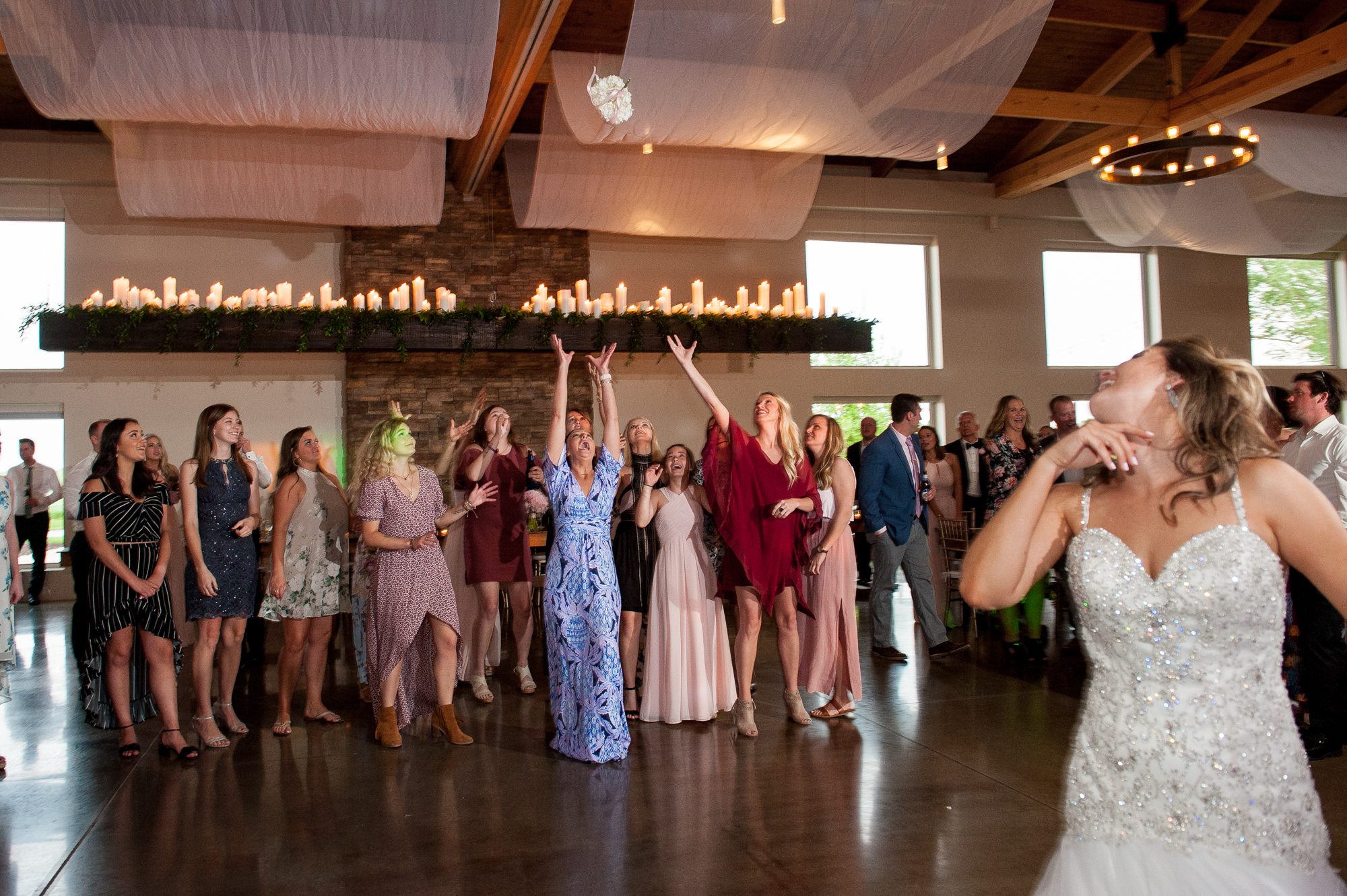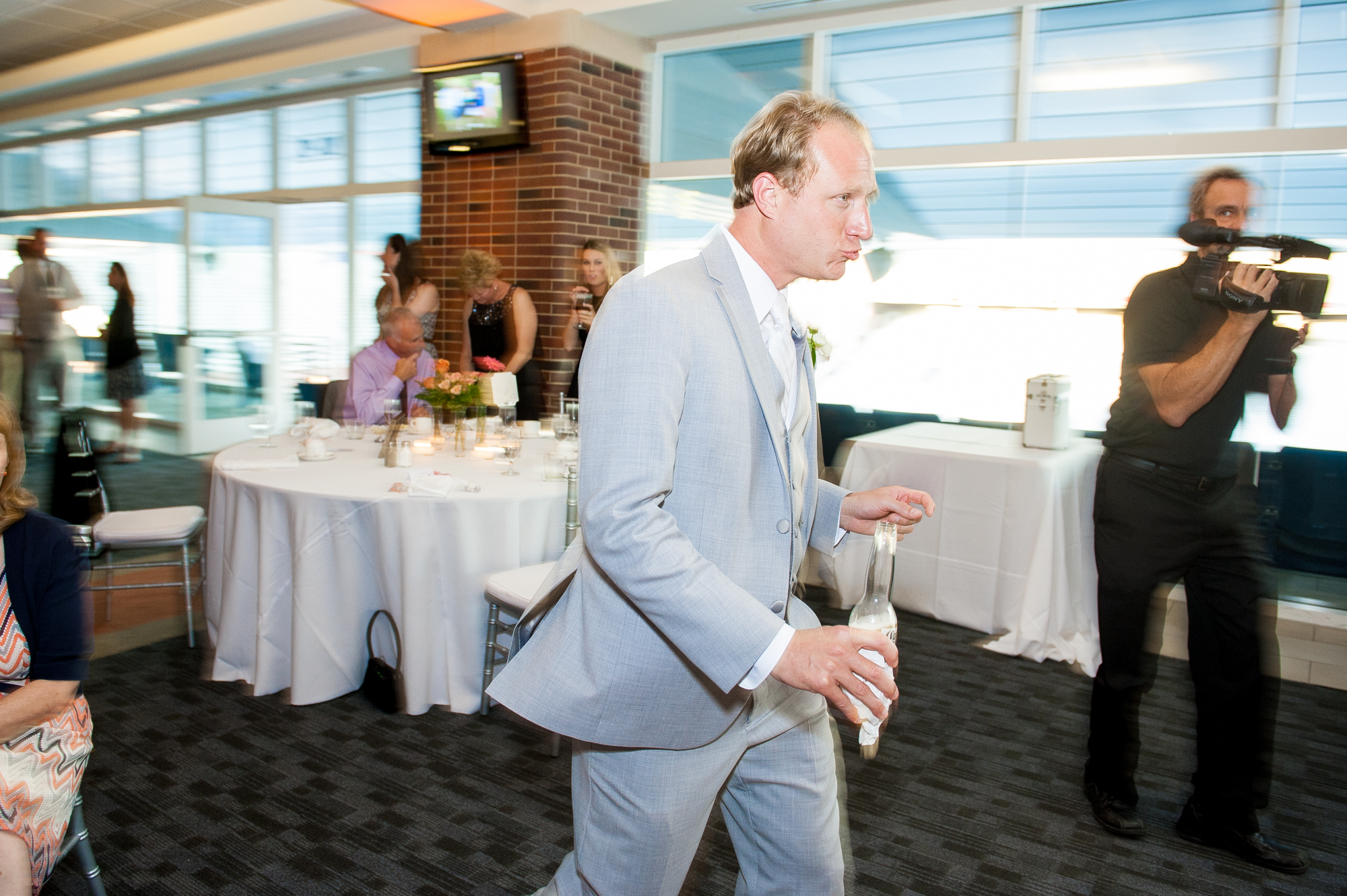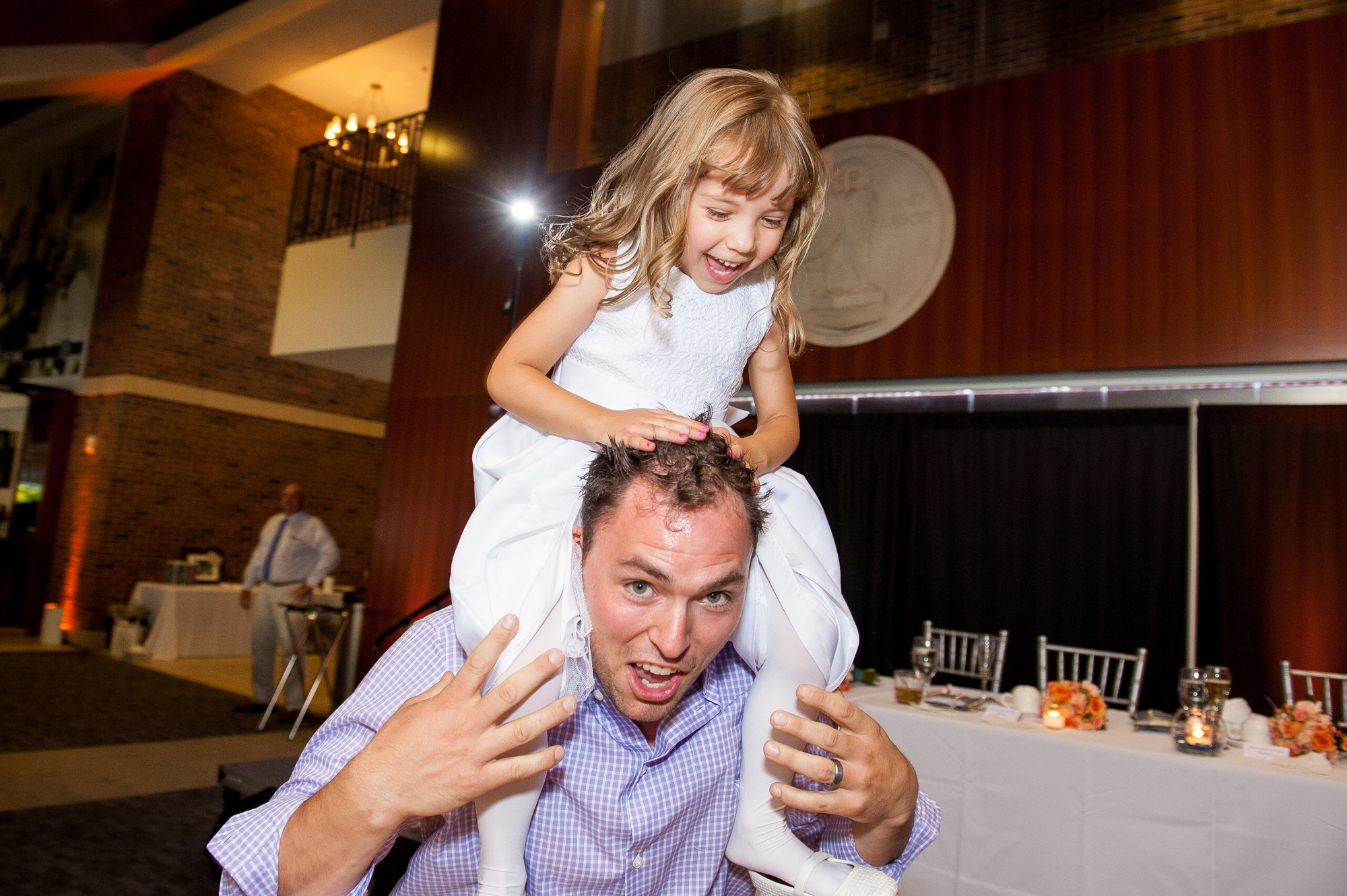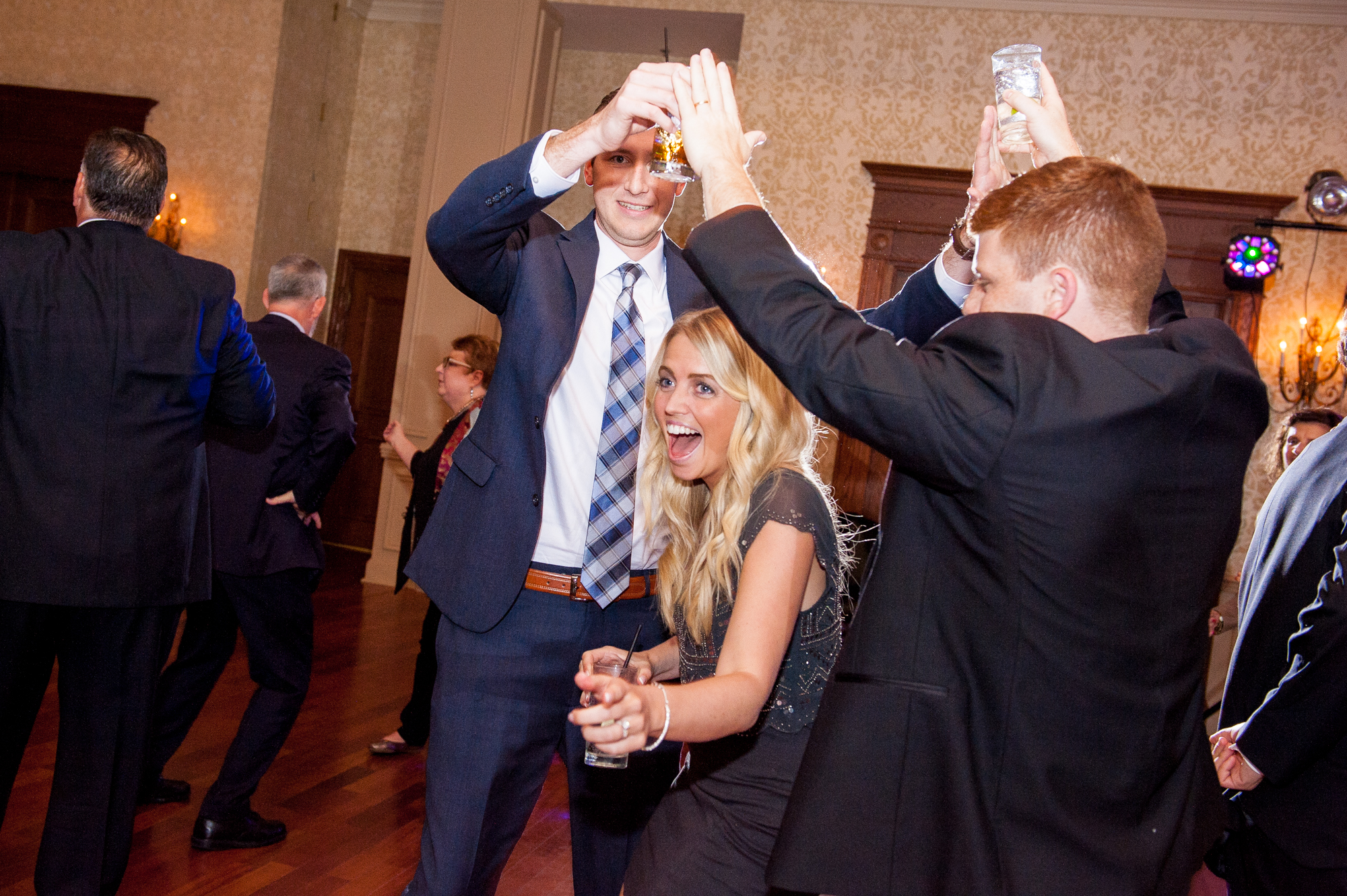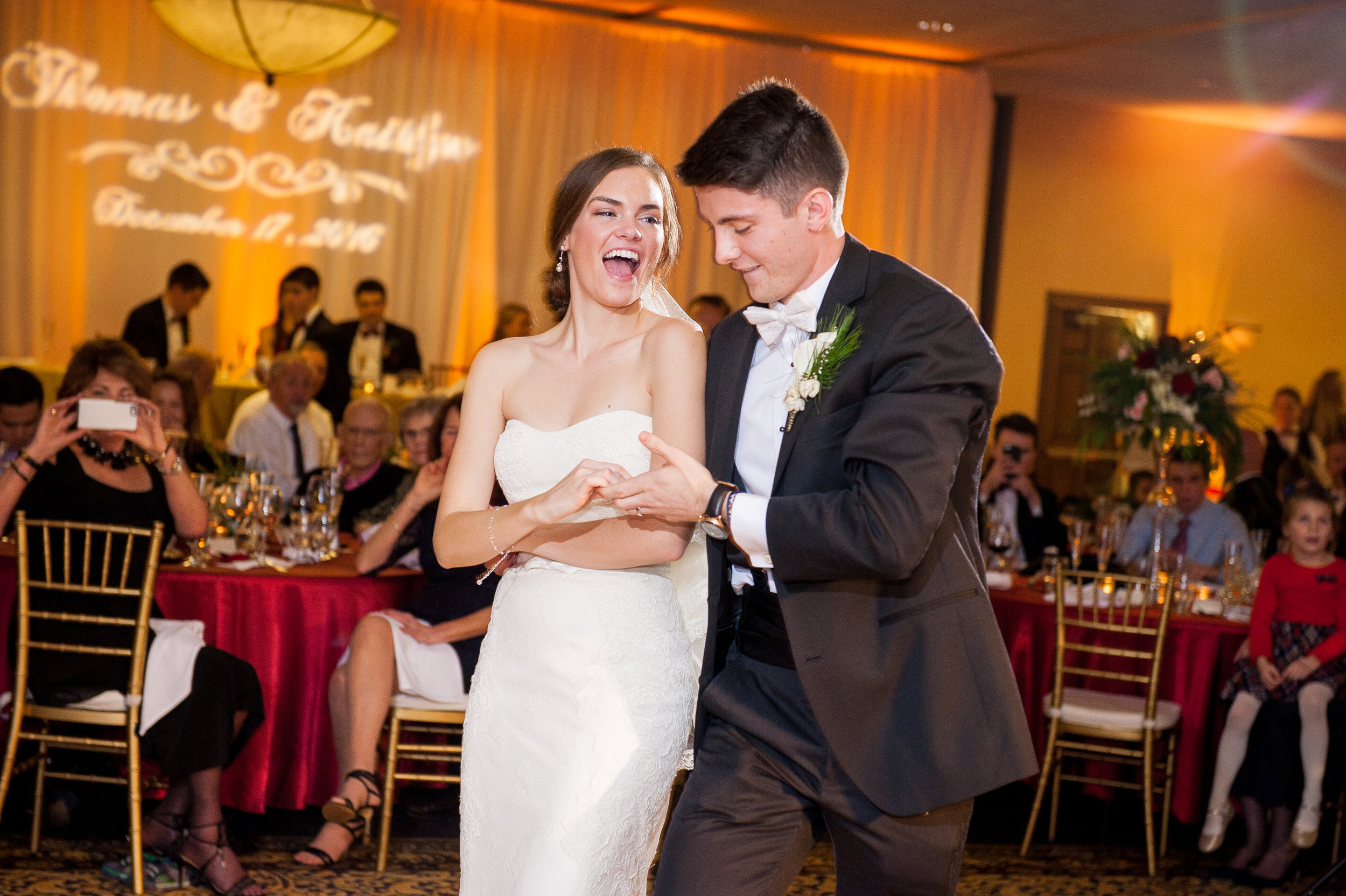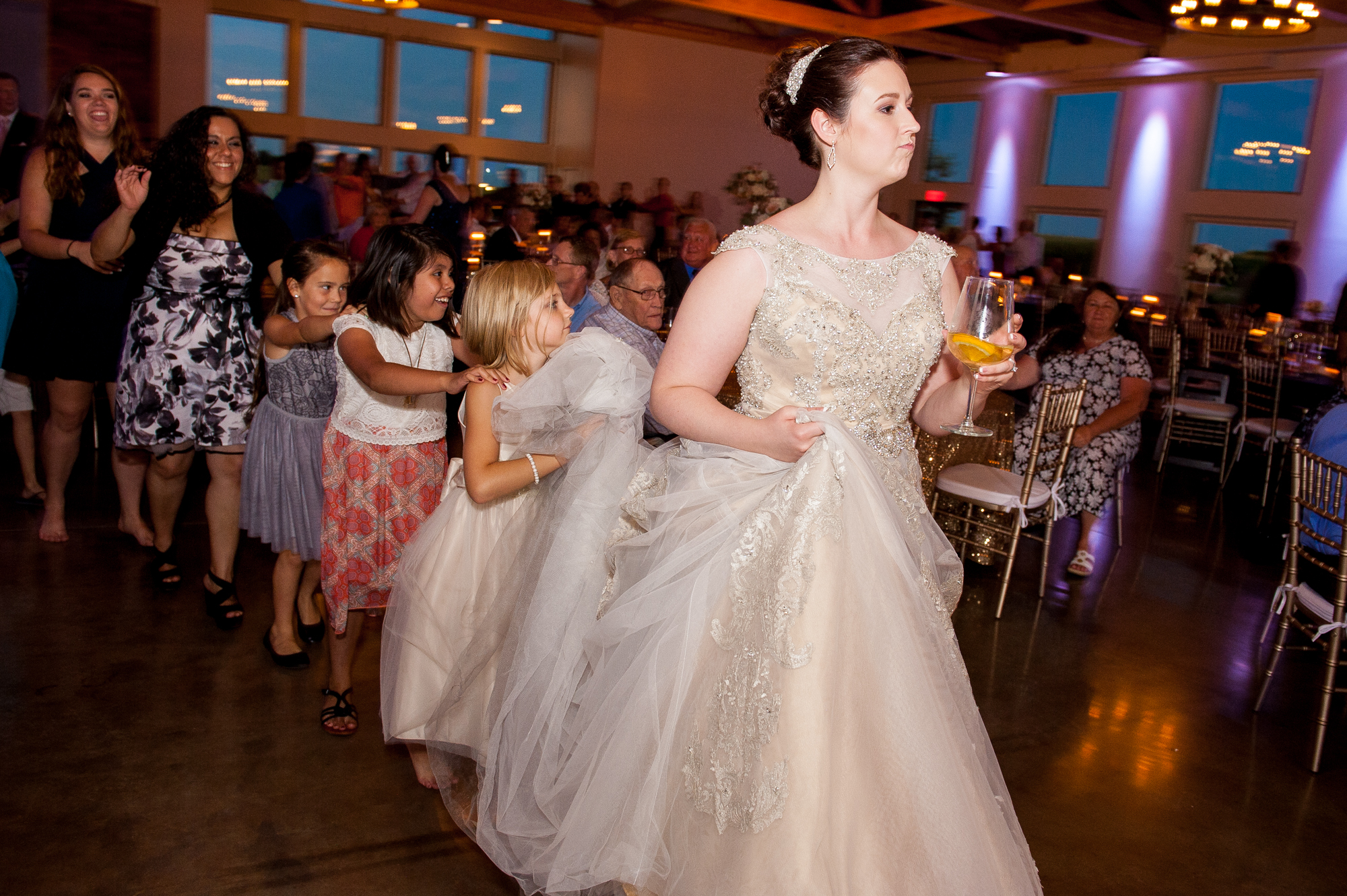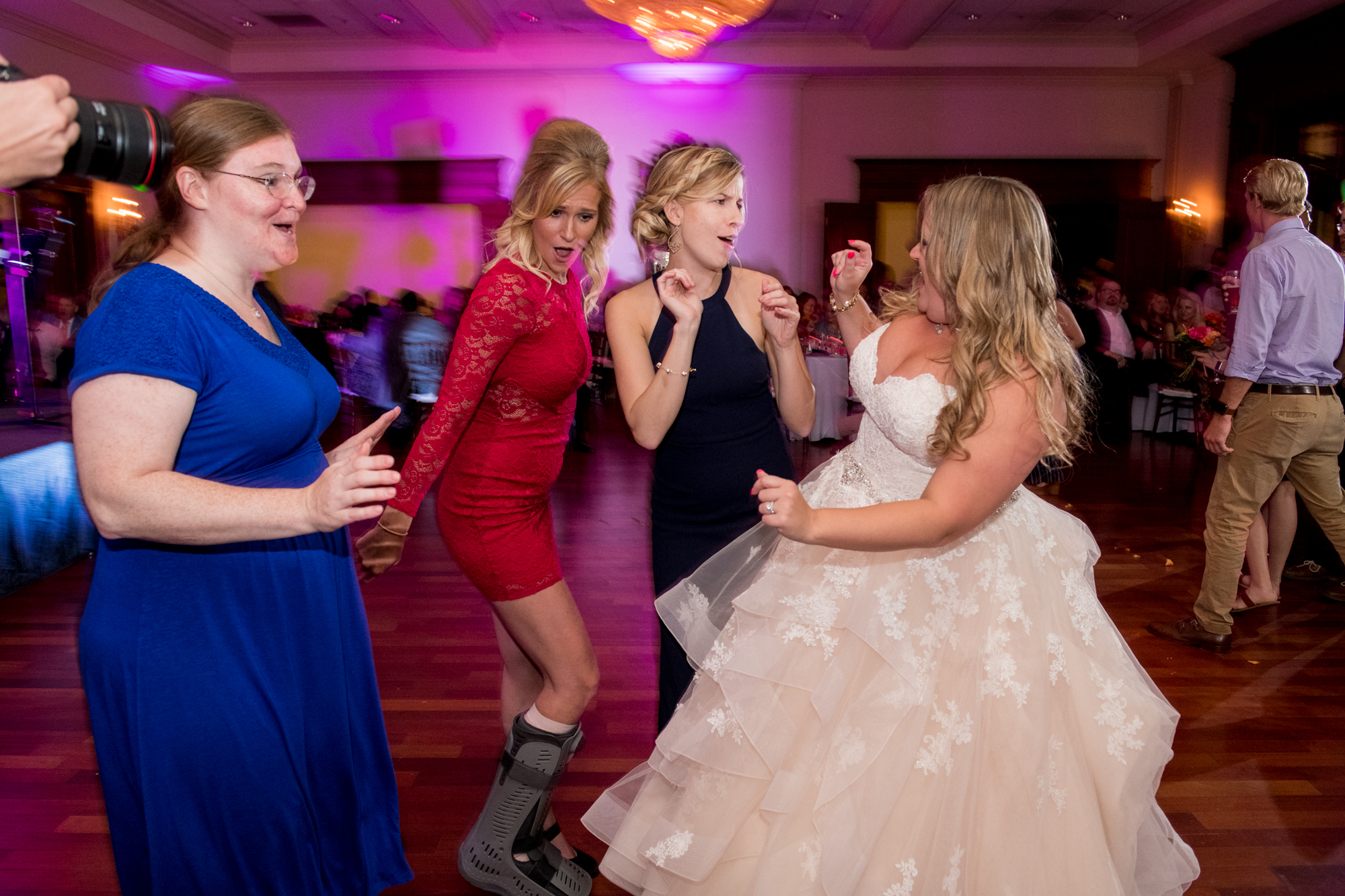Using Rear-Curtain Sync for Wedding Receptions + Events
I’m a member of a few organizations that meet monthly or a few times a year. One of my absolute favorites is the Piatt County Camera Club, and I tag-teamed teaching this month with my friend Judd. He talked about high-speed sync (which I’m going to finally master this year!) and I talked about rear-curtain sync. We also watched a video by Adorama that is a good intro to rear-curtain sync if you’re not familiar with it.
Rear-curtain sync is something that I have used for years and in fact, I have it turned on in my camera almost all the time, as it doesn’t affect anything if I’m not using a flash or a slow shutter speed. I’m a Nikon shooter though, and setup is a bit different if you’re a Canon shooter (I’m not sure about Sony, Fuji, etc — sorry!). With the Canon system, you select rear-curtain, sometimes called 2nd curtain, on the FLASH and not the camera. There’s a symbol with 3 triangles, and that option is available on Canon brand speedlights, and some other brands as well. Check your user’s manual to be sure.
Now, why on earth would someone use rear-curtain sync?
For me, I find it very appealing for dark events where I’m using an on-camera flash, namely wedding receptions. It allows me to slow down my shutter speed to pull in more ambient light (also called dragging the shutter), but still freeze my subject(s) with my flash. I usually slow my shutter down to around 1/30 of a second (sometimes slower!), which causes a bit of ghosting, but I also am able to pull in things like uplighting, DJ lights, monogram lights, and chandeliers — basically any ambient light in the room. By slowing my shutter speed, I also don’t have to sacrifice as much ISO and so avoid getting too much grain in my images.
It can also be fun to move your camera while the shutter is open. I sometimes will twist my camera in a circular motion or in a diagonal direction during the exposure. I’ve also seen people move their camera in a full circle, or a kind of zig-zag motion. This is an awesome time to experiment and play with your flashes! People are dancing and having a good time, and you have the freedom of the important stuff being over and done.
So what is rear-curtain sync exactly?
A camera has two curtains on either side of the sensor — a front curtain & a rear curtain (or 1st & 2nd). The first curtain opens to expose the sensor, and then the 2nd curtain closes to stop the exposure. By default, your flash is set to fire at the beginning of that exposure as soon as the first curtain opens. When using rear-curtain sync, the flash fires at the end of the exposure, just before the 2nd curtain closes. So as you can imagine, this doesn’t really make a difference on a fast shutter speed. In my opinion, you don’t really start to see the effects of it until you get slower than around 1/100 of a second.
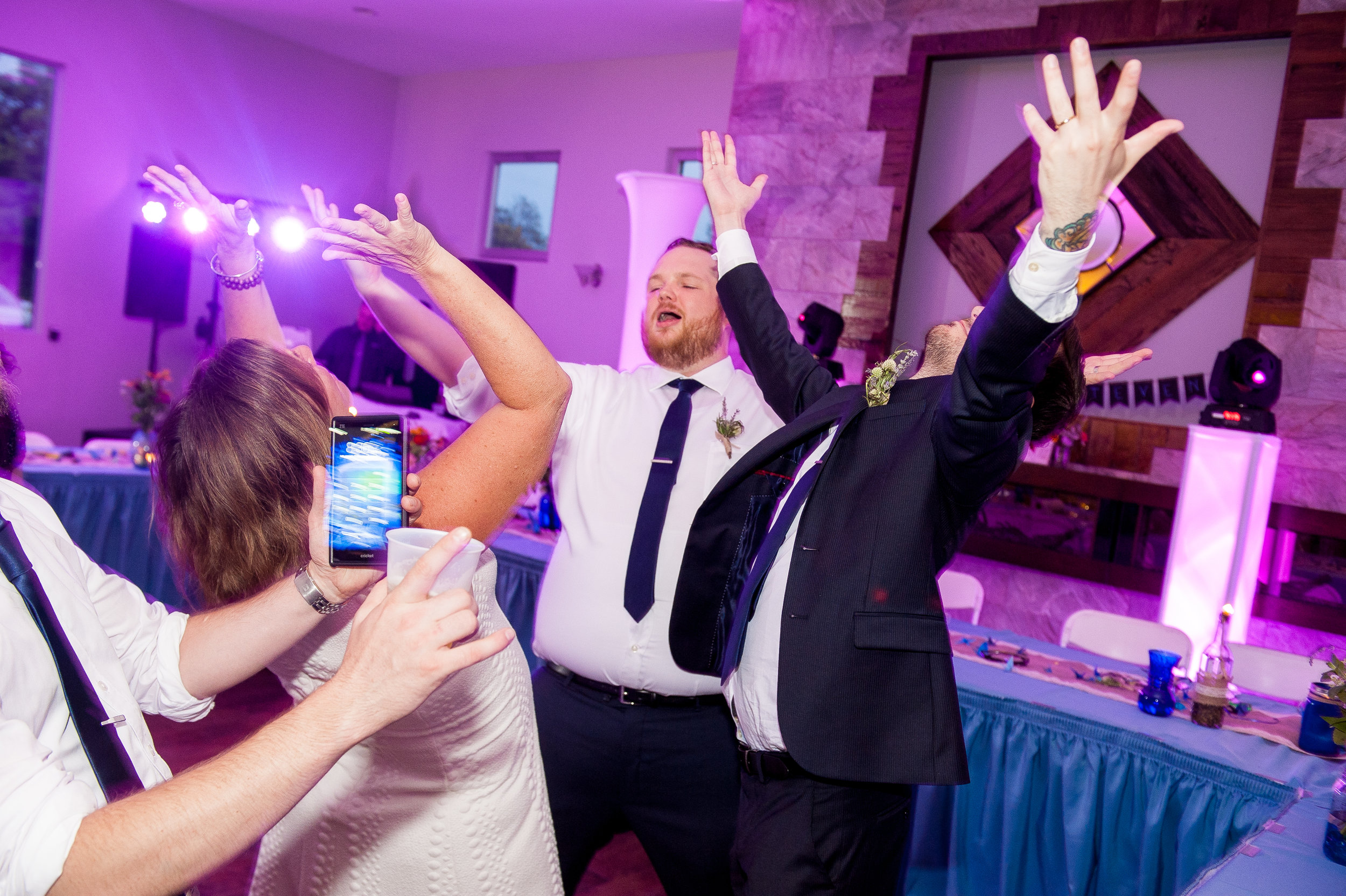
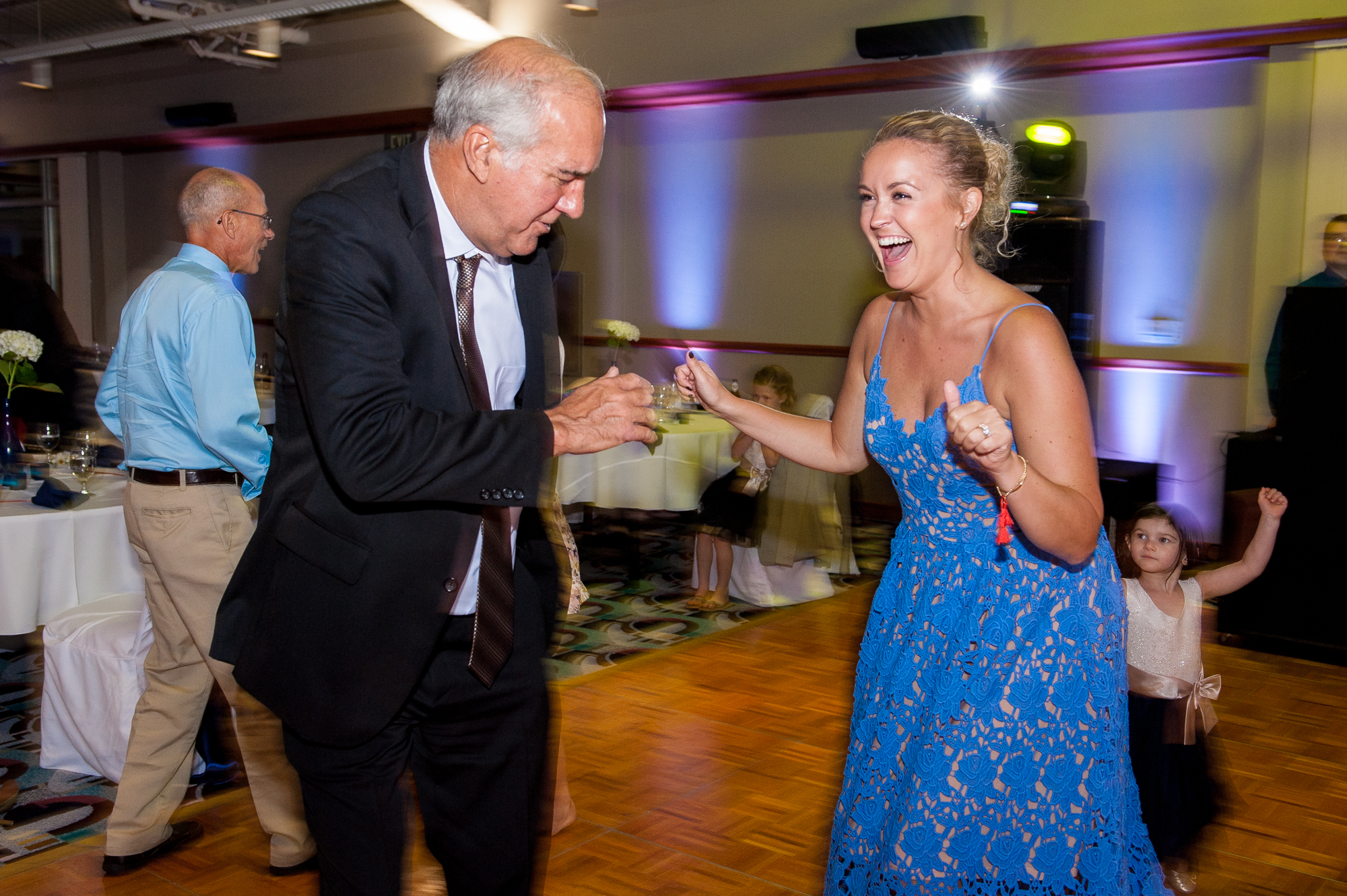
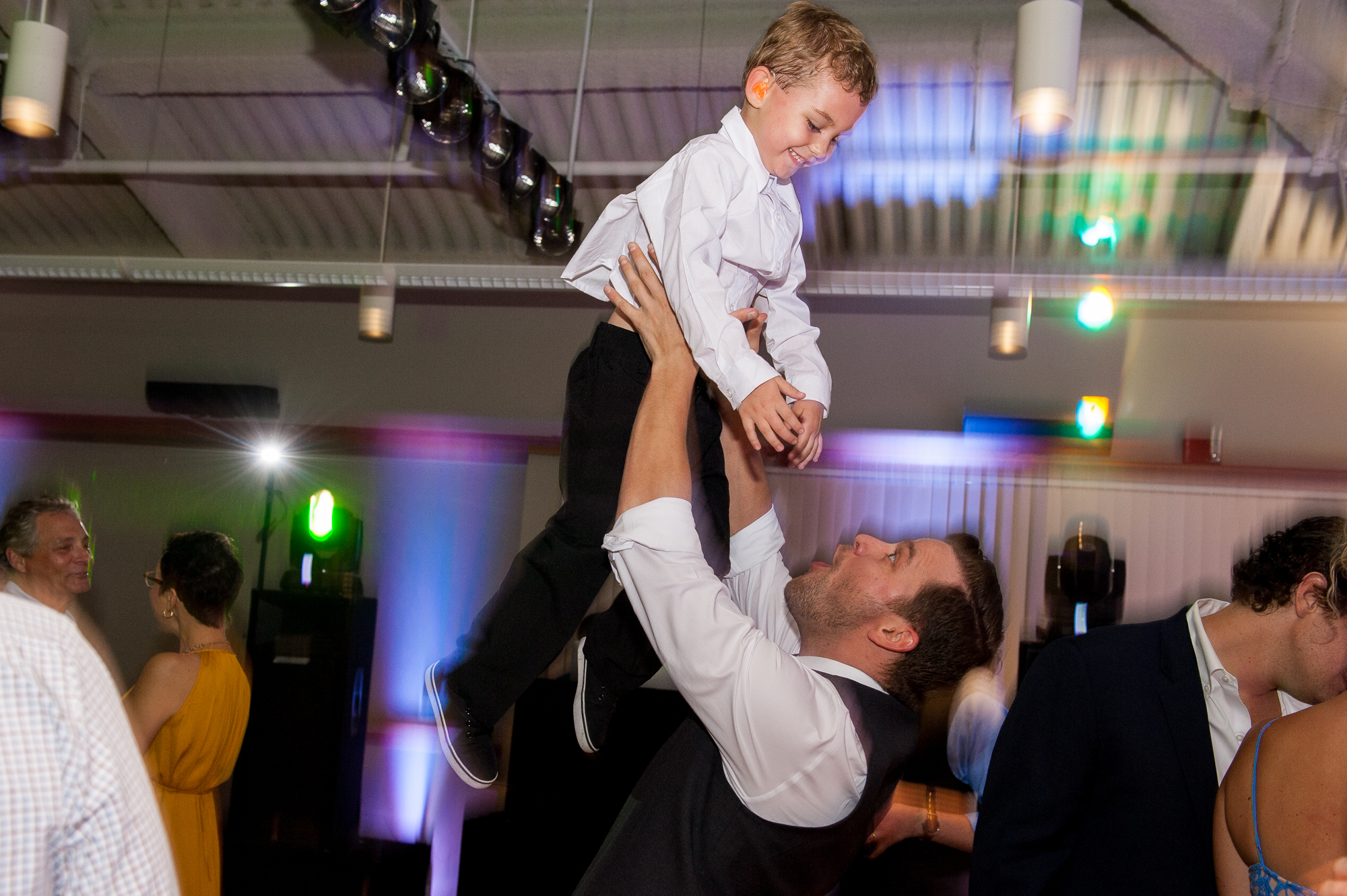

I prefer rear-curtain sync over front-curtain sync for my wedding receptions because sometimes you don’t see as much of the subject as I’d like to once the blur/movement happens. If I freeze the motion at the beginning of the shot, it allows lighting and dance moves to overtake the subject — sometimes a little, sometimes a lot. It is definitely a preference thing, but give it a try and see if you like it!


